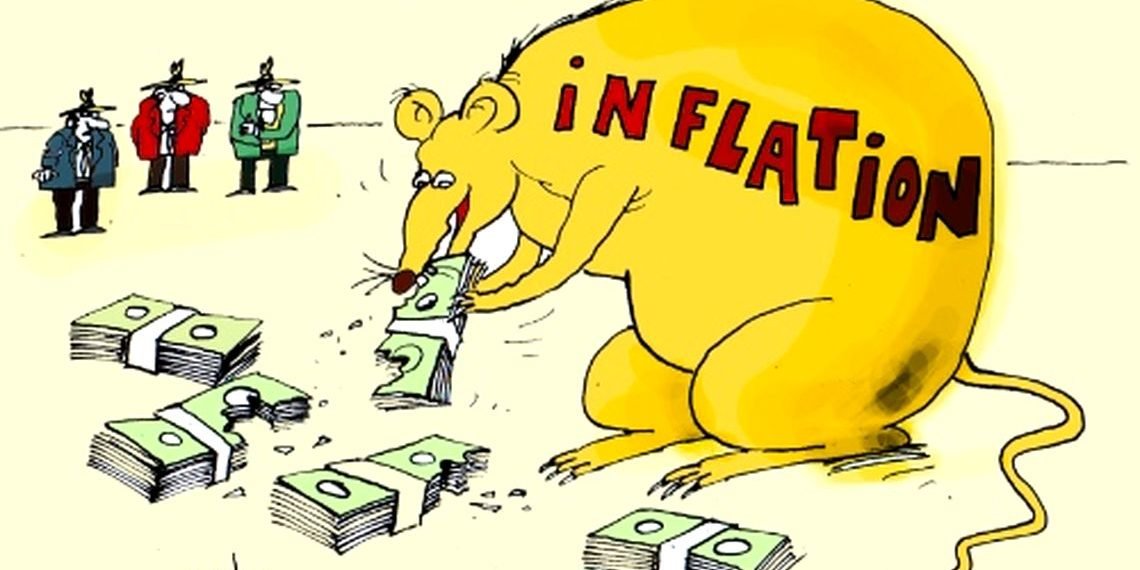The International Monetary Fund (IMF) is projecting Ghana’s inflation to end the year at 10.6 percent.
This is higher than the 2019 inflation figure of 7.2 percent and the Bank of Ghana’s inflation band of 8+_2 percent.
In its October edition of the world Economic Outlook, the Bretton Woods institution however pointed out that the country’s inflation would settle at 8.7 percent in the medium term in 2021.
The 10.6 percent projected inflation is the same as that of the Sub-Saharan regional average for 2020.
The projection also makes the country one of the middle-income countries in Sub-Saharan Africa with the highest rate of inflation. The Sub-regional average for middle-income countries for 2020 is 4.3 percent.

Trends in inflation
Headline inflation firmed up significantly to 11.2 percent at the end of the second quarter of 2020, significantly above the 7.8 percent recorded at the end of the first quarter of 2020.
The rise in inflation between the quarters, according to the Bank of Ghana was due to the impact of the market fumigation exercise and lockdown restrictions, which caused panic buying of various products especially food items, leading to a surge in prices.
Food inflation picked up from 8.4 percent at the end of the first quarter to 13.8 percent at the end of the second quarter of 2020 because of a broad-based increase in food prices across the CPI basket.
Non-food inflation, also rose in tandem with food inflation to 9.2 percent from 7.4 percent in the review period, largely driven by rising household rents in the housing and utilities category.
The central bank’s survey of inflation expectations pointed to heightened inflation expectations within the period which was mainly attributed to the impact of the two panic buying episodes on price expectations.
In third quarter of 2020, the national year-on-year inflation rate dropped from 10.5% in August to 10.4% in September 2020. Month-on-month inflation between August 2020 and September 2020 was 0.2 percent.
The Food and Non-Alcoholic Beverages Division recorded a year-on-year inflation rate of 11.2%. This is 0.2 percentage point lower than the 11.4% recorded in August 2020.

According to the GSS, the marginal decline in inflation in September stands in contrast to the average 0.9% month-on-month inflation that was recorded during the months April to July 2020 and the average month-on-month inflation rate of 0.7% that was recorded in the six months prior to COVID-19.
The GSS indicated that, only two of the thirteen Divisions had higher than average inflation rates; Housing, Water, Electricity and Gas (20.3%) and Food and Non-Alcoholic Beverages (11.2%).
Regional analyses in the third quarter revealed that, the overall year-on-year inflation ranged from 1.3% in the Upper West Region to 14.2% in Greater Accra.
The highest overall month-on-month inflation of 0.1% was recorded in the Volta Region. All regions with the exception of Greater Accra showed a negative month-on-month Food Inflation.
The September CPI newsletter also shows that the inflation of imported goods was 5.1%, while that of local goods was 12.3% on average. Month-on-month inflation for imported goods was 0.4%, while month-on-month inflation for local goods was -0.5%.
The main contributor to negative local inflation, according to the GSS, “was the inflation of locally produced foods”.

However, the central bank is optimistic about potential decline in food prices which will see inflation returning to the central target by the second quarter of 2021.





















